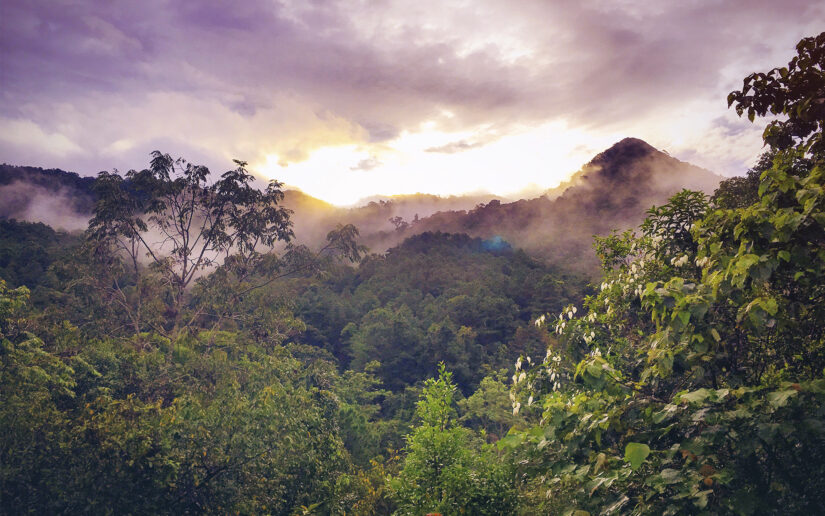Flora and fauna of the jungle
The jungle is a tract of land with many trees and plants, characteristic of tropical and subtropical areas where humidity and rain are abundant, at least in some periods.
Among the characteristics of its ecosystem, it should be noted that in addition to humidity, the number of plant species is large but diverse. That is, many different plant species coexist with several specimens of each, unlike artificial forests or human cultures.
Types of jungle
There are different types of jungle, each characterized by the region and climate and the varieties of its species that inhabit it.
Humid or tropical jungle
The humid or tropical jungle consists of huge trees, up to 30 meters high or even more, with climbing vegetation and heavy rainfall.
Swampy jungle
The swamp forest is the one found on lands that, due to their subsidence and proximity to river currents, maintain a constant moisture in the soil. the presence of amphibians is very common in these regions.
Low jungle
It is the jungle that is found, without being swampy, near rivers and lagoons.
Dry jungle
It is an ecosystem that alternates short moments of rain with long dry periods, and whose vegetation is of a type that adapts to long dry seasons.
Monsoon jungle
This jungle is characteristic of the sub-equatorial region and alternates seasons of heavy storms and rains with other months of prolonged drought.
Each type of jungle has its own flora and fauna, which in turn distinguishes it from other types of landscapes. Although we usually think of the Amazon rainforest, which covers a large part of Brazil, Peru and other South American countries or the Congo forest in Africa, the second largest rainforest in the world, due to its characteristic species and high density of vegetation, there are other forests in different regions that are also very important.
Jungle animals
The animals of the Congo jungle stand out for their specificity. Among them are the threatened mountain gorilla as well as the coastal gorilla, as well as other species such as the dwarf crocodile, the okapi, the dendroaspis or mamba, the extremely venomous snake and the forest elephant.
The animals of the Amazon jungle have their own characteristics, there are many varieties of primates, as well as other very characteristic animals such as the sloth, which can only be found in this region, as well as other animals such as the black caiman and the green anaconda.
Among the animals of the Harapan forest on the island of Sumatra, some endangered species stand out in the world, such as the Sumatran tiger and rhinoceros.
Birds, although many of them migrate at different times of the year, are abundant and very diverse.
Jungle plants
Two-thirds of the terrestrial flora is found in the jungle. Therefore, when it is said that the jungle is the lungs of the world, although this is not quite true, it is a metaphor that works perfectly.
What most attracts the attention of the jungle, at first glance, are its huge trees, which can rise between 30 and 60 meters in height, although there are cases such as Dinizia excelsa, an Amazonian tree that measures up to 88 meters in height and whose age is between 400 and 600 years.
Ferns, vines, creepers and other species are also abundant, especially in rainforests.
Weather in the jungle
The jungle climate is highly dependent on the specific region and rainfall, with temperatures ranging from 20 to 34 degrees.
Currently, many forests are threatened by human exploitation and the risks posed by accelerated climate change.
